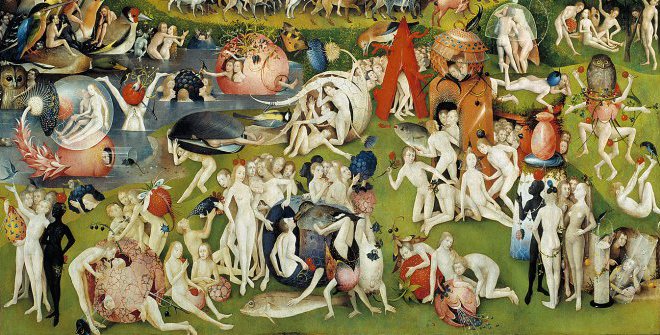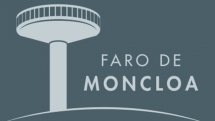The Prado Museum, which commemorated its 200th anniversary in 2019, is the crown jewel of one of the city’s most popular tourist itineraries: the Paseo del Arte, where you'll also find the Thyssen-Bornemisza and Reina Sofía museums. The Prado's walls are lined with masterpieces from the Spanish, Italian and Flemish schools, including Velázquez’ Las Meninas and Goya’s Third of May, 1808. Its collection comprises 8,600 paintings and over 700 sculptures, so we recommend deciding what you want to see before stepping into the museum. If you are short on time, the Prado's website suggests three itineraries, lasting 1, 2 and 3 hours and covering the museum's most important masterpieces.
Buy the Paseo del Arte Pass so you can enjoy Madrid's three most renowned museums at a reduced rate!
Spanish School of Painting
The Prado Museum houses the most comprehensive collection of Spanish painting in the world. Start your visit in the 11th century, contemplating the Mozarabic murals from the Church of San Baudelio de Berlanga, and from there move on to the canvases painted by Bartolomé Bermejo, Pedro Berruguete, Juan de Juanes or Luis de Morales to trace a timeline from Spanish-Flemish Gothic painting to the Renaissance. The galleries devoted to El Greco display some of his most notable works such as The Knight with his Hand on his Breast and The Holy Trinity.
The Prado is home to works by some of the Spanish Golden Age leading painters including Ribera, Zurbarán, Murillo, and the great Velázquez, whose masterpieces Las Meninas and The Seamstresses hang here. In the Goya galleries you’ll find an array of works by the great artist, from the tapestry cartoons he made for the Royal Tapestry Factory to the Black Paintings he painted on the walls of his house La Quinta del Sordo (Deaf-Man's Villa). The rooms devoted to 19th-century art feature pieces by Fortuny, Federico, Raimundo Madrazo and Joaquín Sorolla, the Valencian artist whose wonderful house-museum is also found in the city.
Collections of works from other schools
Spanish Baroque art was strongly influenced by the Renaissance, a style of art that emerged in Italy and soon spread across the continent. The Prado boasts a number of notable works painted in the Italian Quattrocento (15thcentury), including Fra Angelico's Annunciation, the chest with the story of Nastagio degli Onesti by Botticelli, Mantegna's The Death of the Virgin and Antonello da Messina's The Dead Christ Supported by an Angel. Raphael’s virgins and paintings by Titian, Tintoretto and Veronese -the stars of the Venetian school- are wonderful examples of art from the Italian Cinquecento (16th century) and are among the Prado Museum's most valuable treasures. Artworks by Caravaggio, Guido Reni and Annibale Carracci are a superb illustration of the different paths followed by the Italian Baroque.
Strong political ties between the Spanish monarchy and Flanders gave the Prado its wonderful collection of Flemish art. It spans from works by Flemish Primitives - of which Philip II was an ardent admirer - like Van der Weyden's The Descent from the Cross and Hieronymus Bosch's The Garden of Earthly Delights, to paintings from the Flemish Baroque, in particular paintings by Rubens, the Bruegel Family, Jordaens and Teniers. The museum also boasts works by some of the great French, German and Dutch painters including Dürer, Claude Lorrain, Rembrandt and Watteau. Although not as famous, the galleries devoted to sculpture and decorative arts are equally fascinating. They are home to Roman statues, the Dauphin's Treasure – a group of luxury vessels inherited by Philip V - and sculptures by Leone and Pompeo Leoni commissioned by Philip II and Charles V.

The museum's history
The Prado Museum opened on November 10, 1819. The building designed by Juan de Villanueva was originally conceived as a house of science but, encouraged by his wife Maria Isabel of Braganza, King Ferdinand VII finally decided to use it as a museum, to store the royal paintings. Years of private donations and acquisitions led to a notable expansion of its collection.
At the start of the Spanish Civil War, the artworks were moved to the basement and sandbagged to protect them against possible bombings. Then, following the recommendations of the League of Nations, they were moved to Valencia and finally evacuated to the Geneva headquarters of the LoN. When the Second World War broke out shortly after, the collection was returned to Madrid.
A new permanent display
From 17 March 2021, the museum presents a new permanent display in Rooms 100, 101 and 102 of the Villanueva building. Taking the evolution of the Museum’s architecture as its guiding thread, it offers visitors a survey of the more than 200-year history of Spain’s leading cultural institution. The display comprises 265 items: more than 50 photographs, including numerous early ones, 9 architectural models, documents, postcards, prints, plans and objects from the everyday life of the museum which together introduce visitors to the Prado’s rich history.
Temporary exhibitions
The Villanueva building houses large part of the museum's magnificent collection of paintings and sculptures. Right behind it, next to the Cloister of Los Jerónimos, stands the extension designed by modernist architect Rafael Moneo which hosts temporary exhibitions, restoration workshops and houses an auditorium, a café, a restaurant and offices. A few metres away, next to El Retiro Park you’ll find El Casón del Buen Retiro, which also belongs to the museum. Once the dance hall of the former Palace of El Buen Retiro, today it is home to a library and a reading room for researchers.
 museo_del_prado_sala_el_bosco_660.jpg
museo_del_prado_sala_el_bosco_660.jpg Bosco663x335_1406288680.356.jpg
Bosco663x335_1406288680.356.jpg LASMENINAS663x335_1406286167.91.jpg
LASMENINAS663x335_1406286167.91.jpg MUSEOPRADO_005_alta.jpg
MUSEOPRADO_005_alta.jpg MuseodelPradoJeronimos_1404213541.27.jpg
MuseodelPradoJeronimos_1404213541.27.jpg GRACIAS663x335_1406286196.657.jpg
GRACIAS663x335_1406286196.657.jpg LLUVIADEORO663x335_1406286503.859.jpg
LLUVIADEORO663x335_1406286503.859.jpg PERRO663x335_1406286579.79.jpg
PERRO663x335_1406286579.79.jpg MajadeGoya663x335_1406288127.874.jpg
MajadeGoya663x335_1406288127.874.jpg























